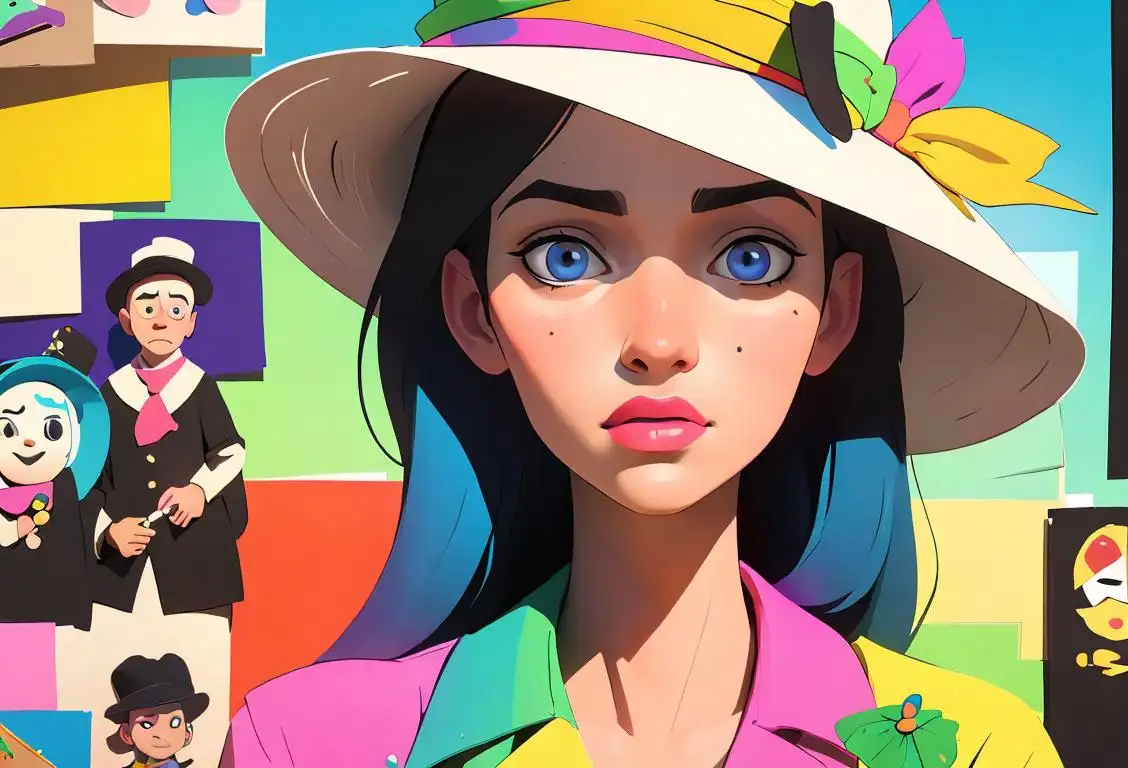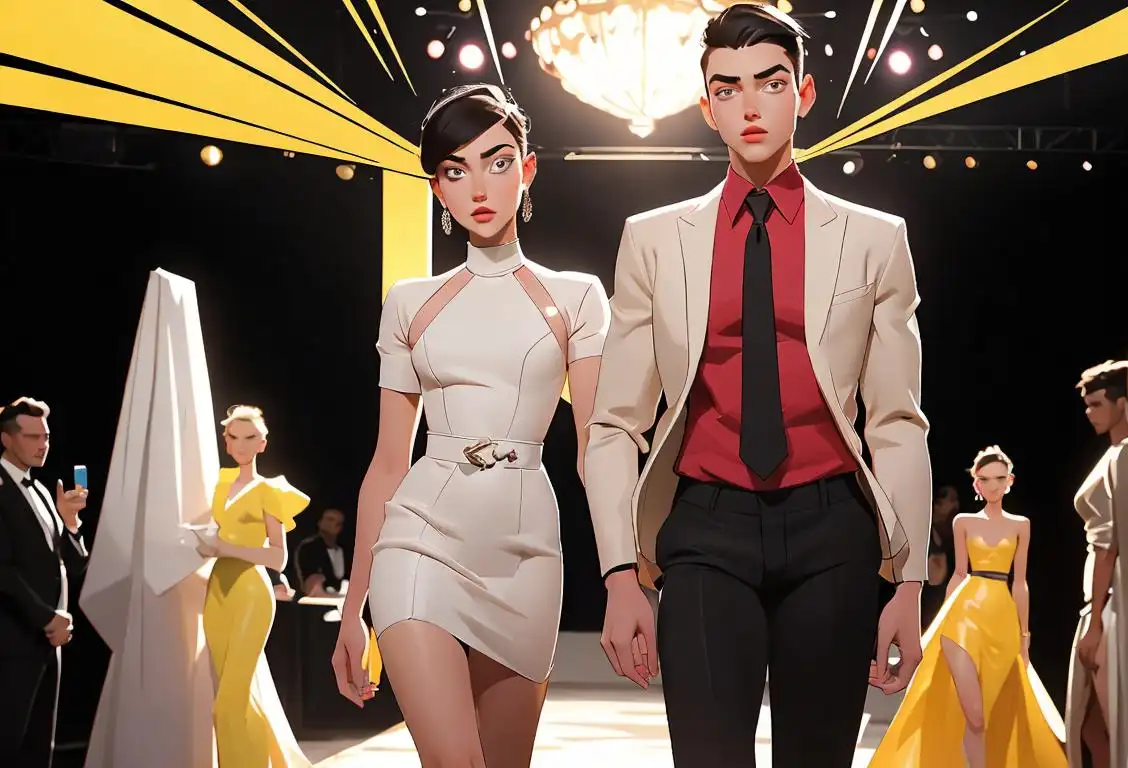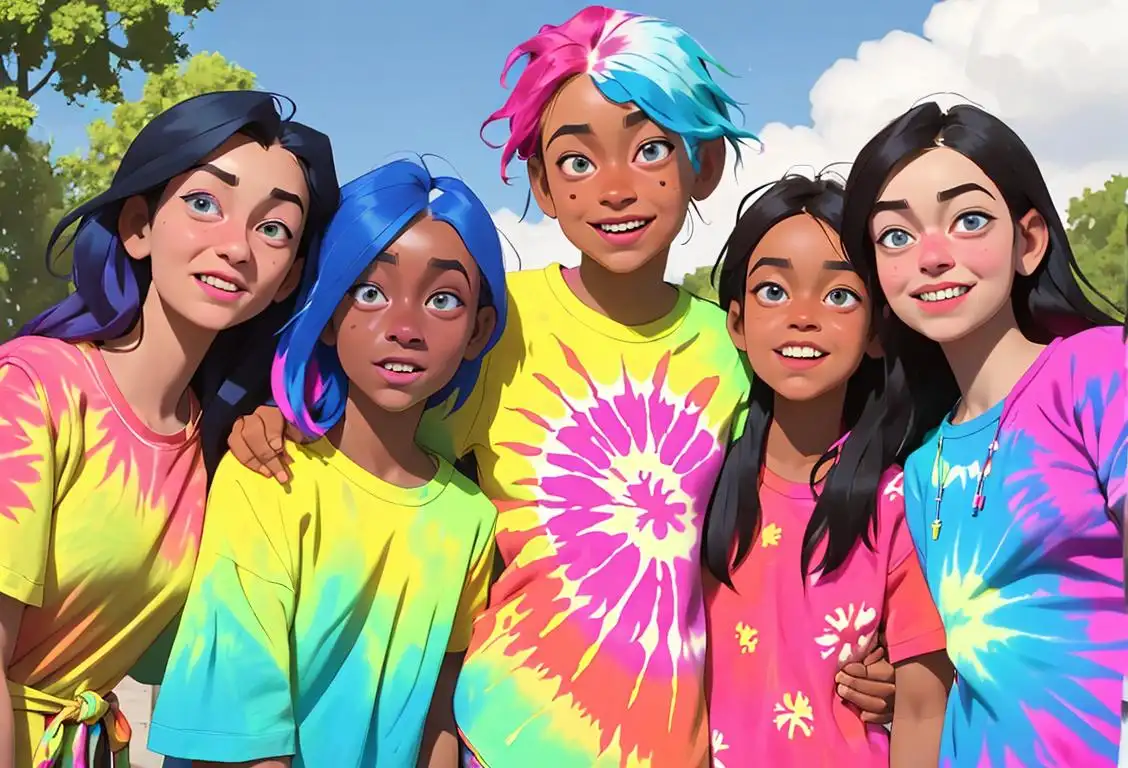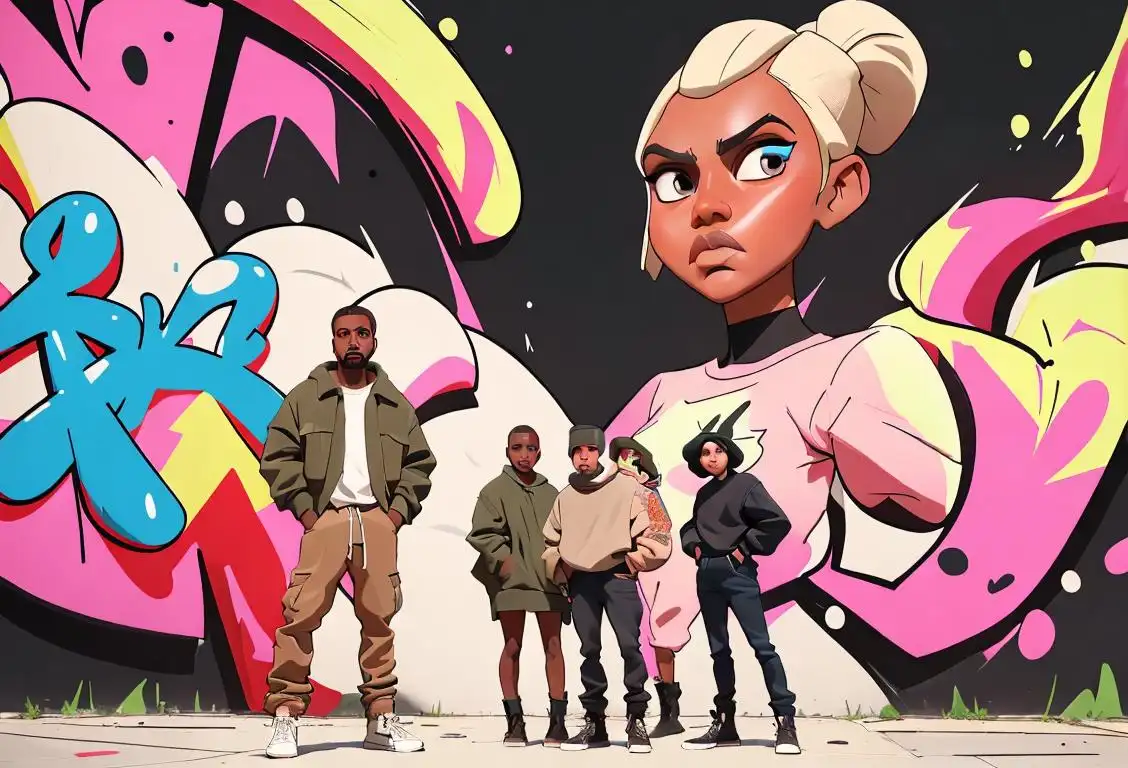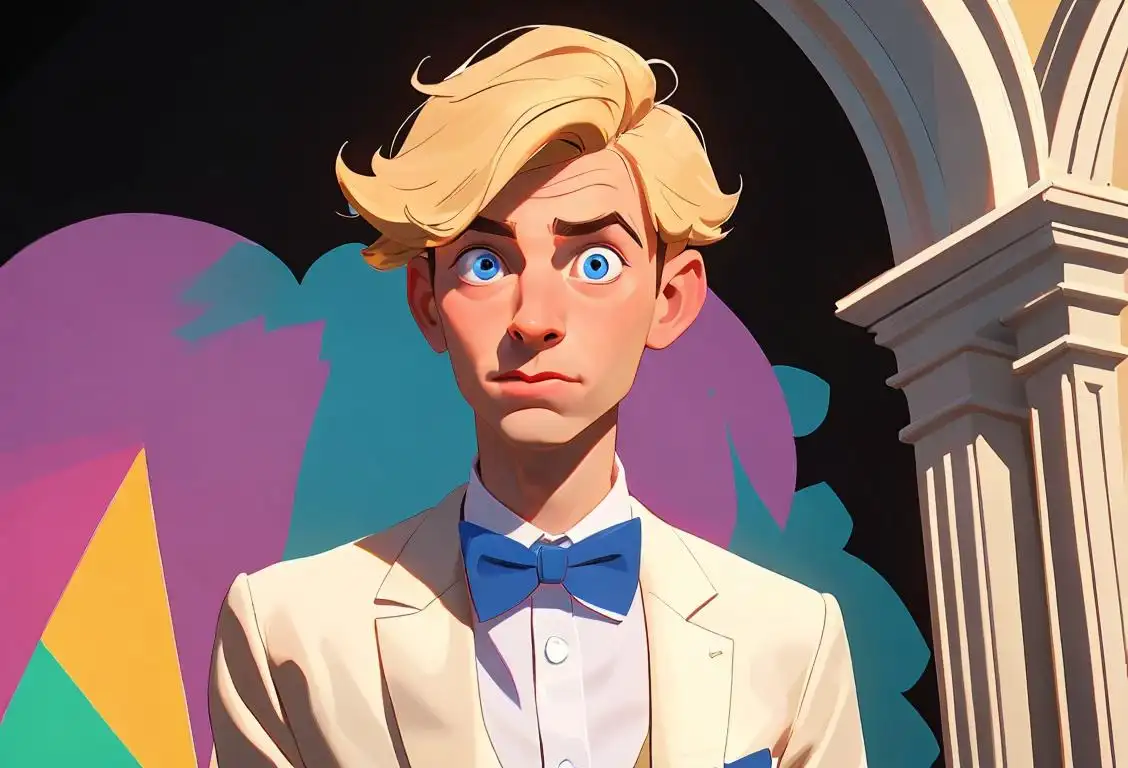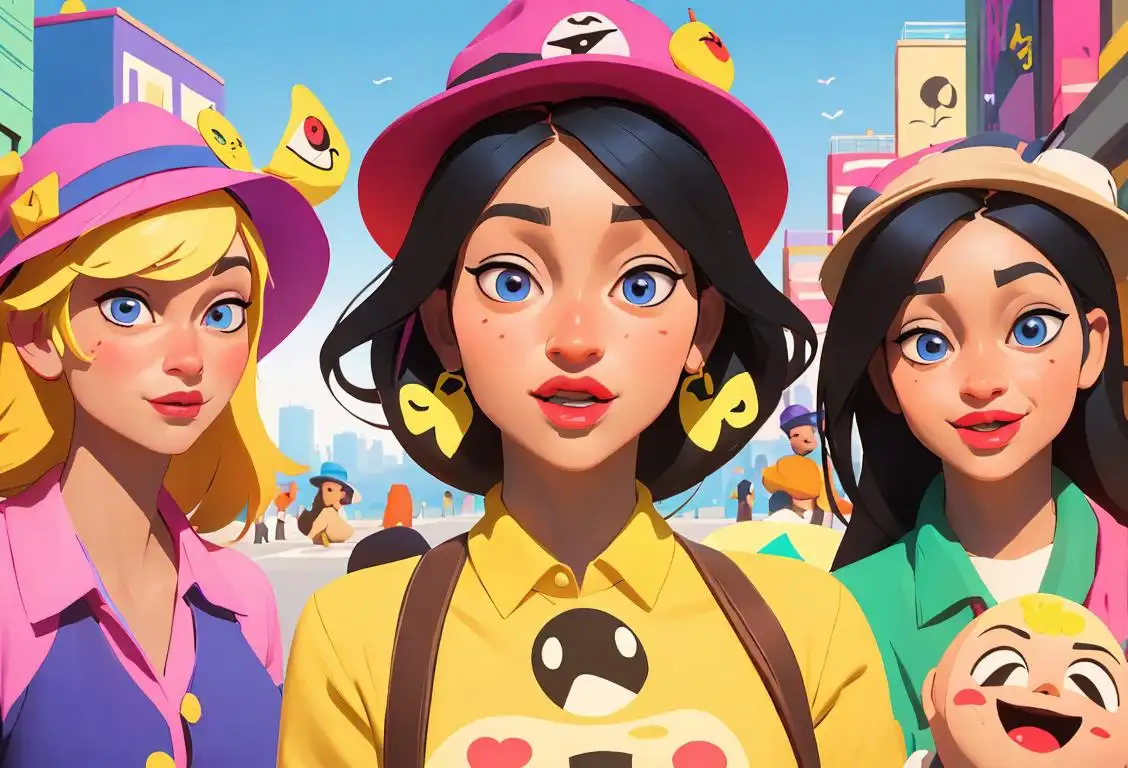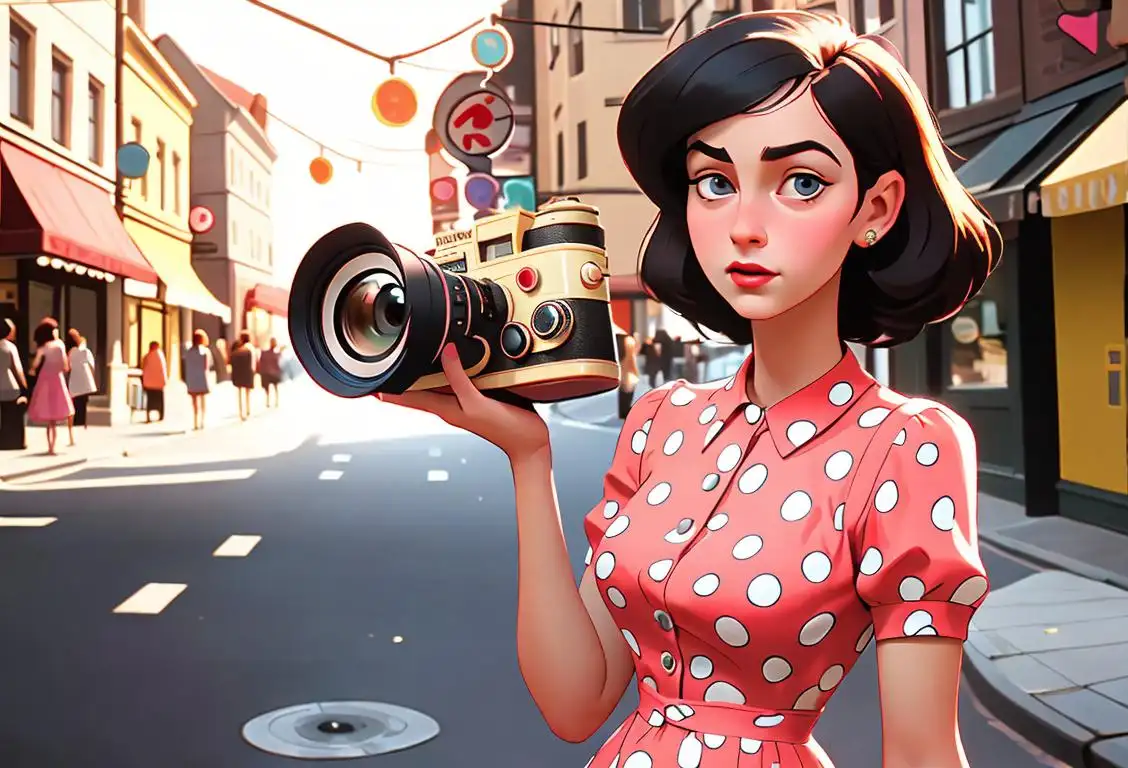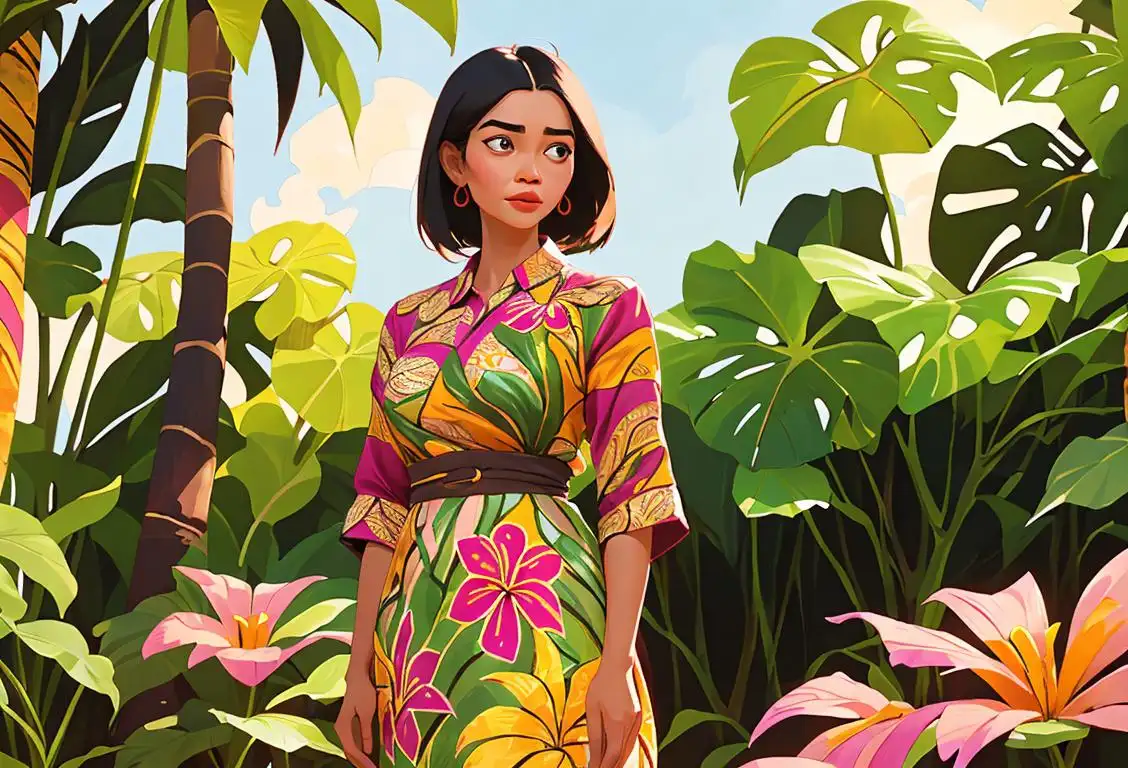National Flower Crown Day
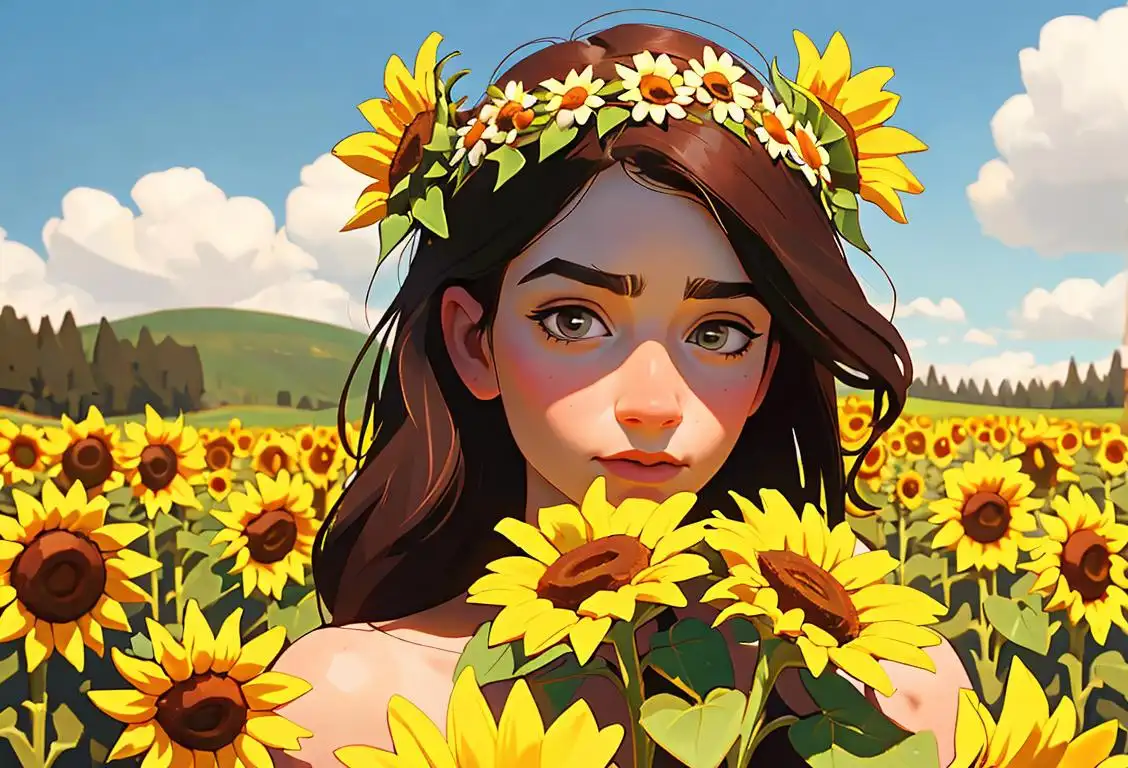
Welcome to the whimsical world of National Flower Crown Day! Get ready to channel your inner flower child and embrace a day dedicated to adorning your head with flowers. Whether you're a fan of daisies, roses, or even sunflowers, this celebration promises to bring out your inner bohemian spirit.
When is Flower Crown Day?
It's national flower crown day on the 24th September.
What is National Flower Crown Day?
National Flower Crown Day is a day dedicated to the art of flower crown making and wearing. It's a chance to celebrate nature's beauty by wearing a crown made of fresh flowers, silk blooms, or even crafted from paper. The origins of this delightful day are rooted in ancient traditions, where flower crowns were worn during special ceremonies, festivals, and even weddings.
Internet History of National Flower Crown Day
The online mentions of National Flower Crown Day began blooming around 2015, with people sharing photos of their flower crown creations on social media platforms like Instagram and Pinterest. The trend quickly spread, and flower crown enthusiasts started organizing events and workshops to teach others the art of flower crown making.
How to Celebrate
Are you ready to become the ultimate flower queen or king? Here are a few ways to celebrate National Flower Crown Day:
- Gather your favorite flowers and create your own unique flower crown. Let your creativity blossom!
- Organize a flower crown-making party with friends. It's a fantastic opportunity to bond while crafting beautiful headpieces.
- Wear your flower crown proudly and share photos on social media using the hashtag #NationalFlowerCrownDay.
Fun Fact
Did you know that flower crowns date back to ancient Greece? They were often worn during special ceremonies dedicated to the gods and goddesses. Those Greeks knew how to rock some floral headwear!
History behind the term 'Flower Crown'
Ancient Times
Floral Adornments
Flower crowns have a long history that can be traced back to ancient civilizations. In many cultures, flowers were used to adorn the head as a symbol of beauty, fertility, and spirituality. Ancient Greeks and Romans were known to wear wreaths made of twigs, leaves, and flowers during special ceremonies and events. These floral adornments were also prevalent in ancient Egyptian, Mayan, and Aztec civilizations.
Ancient Times
Floral Adornments
In ancient times, people used flowers as adornments in various ways. Flower wreaths, also known as floral crowns, were worn as a symbol of honor and celebration. These crowns were commonly worn by ancient Greeks and Romans during ceremonies and festivals, showcasing the beauty and significance of nature's floral offerings.
Ancient Times
Adornment with Fresh Flowers
In ancient times, people decorated their heads with fresh flowers as a symbol of beauty and to honor nature. These flower adornments were mainly worn during religious ceremonies and celebrations.
Ancient Egypt, circa 2,500 BCE
Floral Headdresses in Ancient Egypt
The history of the flower crown can be traced back to Ancient Egypt, where floral headdresses were commonly worn. The Egyptians held flowers in high regard and often used them for decorative purposes. They believed that wearing garlands made from flowers would bring good luck and symbolize fertility.
12th century
Floral adornments in medieval times
During the 12th century, people in Europe began using flower garlands and wreaths as decorative headdresses. These floral adornments were worn during festive occasions and symbolized beauty, fertility, and celebration.
Ancient Times
Crown of Herbs
In ancient times, people would make crowns out of herbs and flowers to wear on their heads. These crowns were often worn during religious ceremonies or to symbolize fertility and love.
Ancient Times
Floral Adornments in Ancient Civilizations
Flower crowns have their roots in ancient civilizations, where floral adornments were a common custom. In ancient Greece, flower crowns were worn as a symbol of celebration and fertility during special occasions and ceremonies. They were also believed to represent power and honor. Similarly, ancient Romans used flower crowns as a way to honor their gods and goddesses. These early instances showcase the cultural significance of flowers and their usage in decorative headpieces.
Ancient Times
Floral Adornments in Ancient Civilizations
Floral adornments have been used by various ancient civilizations across the globe, including the Greeks, Romans, Egyptians, and Mayans. In these ancient cultures, flowers were seen as symbols of beauty, fertility, and spirituality. In some societies, flower crowns were worn during religious ceremonies and festivals to honor the gods and goddesses of nature.
Ancient Greece
Adorning with Nature
In Ancient Greece, people would adorn their heads with wreaths made from various types of vegetation and flowers. These wreaths symbolized various things like victory, celebration, and honor. They were often worn during special events, such as athletic competitions or weddings.
1000 BC
Ancient Rituals
In ancient times, the tradition of adorning one's head with flowers for various rituals and ceremonies was widespread. Flowers were considered symbols of beauty and fertility, and crowns made of flowers held special significance in many cultures.
Medieval Era
Floral Crowns in Weddings
During the medieval era, floral crowns began to be associated with weddings and the bride's attire. Brides would wear delicate wreaths created with flowers in bloom, symbolizing purity, fertility, and love. These crowns also served as a status symbol, representing wealth and social standing.
Hawaii, 1800s
The Haku Lei
The Haku Lei, a traditional flower crown from Hawaii, became popular in the 1800s. The Haku Lei was made by stringing together fresh flowers, leaves, and ferns to form a circular crown. It was commonly worn by both men and women during celebrations, hula performances, and other important events.
19th century
Victorian era fascination with flower symbolism
In the 19th century, the Victorian era brought about a renewed interest in flower symbolism. The language of flowers became popular, and different blooms were assigned specific meanings. Wearing flower crowns became a way for individuals to convey messages and express feelings through the combination of flowers they chose.
16th Century
Renaissance Fashion
During the Renaissance period, flower crowns gained popularity as a fashionable accessory among European nobility and royalty. These intricate headpieces, often made with a combination of fresh flowers and herbs, were adorned with ribbons and gemstones to enhance their beauty. Flower crowns became a symbol of elegance and refinement, adding a touch of nature to the elaborate fashion of the time.
Ancient Greece, circa 5th century BCE
The Influence of Greek Mythology
During ancient times, the Greeks adorned their heads with wreaths made from various plants and flowers. These garlands were associated with religious ceremonies and were often worn to honor gods and goddesses. Greek mythology also played a significant role in popularizing the idea of flower crowns, as they were often depicted in ancient artworks.
Medieval Europe
Flower Garlands
During the medieval period, flower crowns became popular in Europe. The tradition of creating garlands and wreaths from fresh flowers was widespread, and people would often weave them into intricate designs. These flower garlands were worn by both men and women during festivals, weddings, and traditional celebrations. They were considered a sign of prosperity and joy.
Ancient Greece (500 BC - 300 BC)
Honoring Gods and Goddesses
The ancient Greeks embraced the practice of wearing flower crowns to honor their gods and goddesses. These floral wreaths, known as 'stephanos,' were often made from sacred plants like laurel, myrtle, and olive. They were worn during religious ceremonies, festivals, and athletic competitions as a sign of respect and devotion.
Middle Ages (5th - 15th century)
Flower Crowns in Medieval Europe
During the Middle Ages, flower crowns became popular in medieval Europe, particularly among women. They were often made with fresh flowers and worn as decorative headpieces for festivals, weddings, and other special occasions. Flower crowns were also associated with romance and courtly love, frequently depicted in paintings and poetry of the time.
Middle Ages (5th - 15th Century)
Flower Crowns in Medieval Art and Literature
During the Middle Ages, flower crowns gained popularity as a symbol of beauty and innocence. They were often depicted in medieval art, used in religious ceremonies, and mentioned in literature. Flower crowns were associated with maidens and virgins, symbolizing purity and virtue. Many paintings and writings from this period showcase women wearing elaborate flower crowns as a means of romantic expression.
Ancient Greece
Mythological Connection
The ancient Greeks associated flower crowns with their gods and goddesses. In Greek mythology, it was believed that gods and goddesses wore crowns made of flowers as a sign of their divine status.
Medieval Europe
Herbals and Flower Symbolism
During medieval times, floral crowns became popular among royalty and nobility. Herbals, books about plants and their medicinal uses, included illustrations of different flowers and their symbolic meanings. Flower crowns were worn to represent virtues such as purity, innocence, and beauty.
1960s
Hippie Culture
Flower crowns experienced a resurgence in the 1960s as part of the counterculture movement, particularly within the hippie subculture. Inspired by the ideals of peace, love, and nature, flower crowns became a popular accessory for both men and women. They symbolized a connection with nature, freedom, and a rejection of societal norms. Flower crowns were often worn at music festivals and protests as a statement of unity and harmony.
The 1960s
Flower Power Movement
During the 1960s, the Flower Power movement emerged as a countercultural phenomenon, advocating for peace, love, and harmony. Flower crowns became a symbol of this movement, representing the connection with nature and the rejection of traditional societal norms. Flower crowns were often worn by activists and participants in peaceful protests and music festivals.
The Renaissance (14th - 17th centuries)
Flower Crowns in Art
During the Renaissance period, flower crowns gained popularity as a symbol of beauty and elegance. Artists, such as Sandro Botticelli, often depicted women adorned with intricate floral wreaths in their paintings. These artistic representations contributed to the romanticization of flower crowns and their association with femininity and grace.
1960s-1970s
Flower Crowns and the Hippie Movement
The flower crown experienced a revival during the 1960s and 1970s with the rise of the hippie movement. Flower crowns became a symbol of peace, love, and flower power. They were often worn by hippies as a form of self-expression and to embrace nature and the counterculture movement. Flower crowns regularly featured in music festivals, such as the iconic Woodstock Festival in 1969.
1960s
Hippie Movement
In the 1960s, flower crowns experienced a resurgence in popularity thanks to the hippie movement. As a symbol of peace, love, and harmony with nature, flower crowns became a staple accessory for hippies. They would often be seen wearing handmade flower crowns made with wildflowers and other natural materials. Flower crowns became an emblem of the counterculture and a way to express free-spiritedness.
1960s
Flower power and the hippie movement
In the 1960s, the flower crown gained prominence as a symbol of the hippie counterculture and the peace and love movement. Flower power became a cultural phenomenon, and flower crowns were embraced as a bohemian fashion statement, embodying a connection with nature, peace, and unity.
1960s - Flower Power Movement
Flower Crowns in the Hippie Culture
The 1960s witnessed the rise of the Flower Power movement, a countercultural phenomenon that emphasized peace, love, and harmony. Flower crowns became a prominent fashion accessory during this era, representing the connection between humans and nature. Inspired by the bohemian lifestyle and influenced by various cultural traditions, flower crowns were worn by hippies as a symbol of freedom, unity, and rebellion against societal norms.
Medieval Europe, circa 14th century
Flower Crowns in Medieval Europe
In medieval Europe, flower crowns became a popular fashion accessory among women. They were often worn during festive occasions such as weddings and maypoles dances. Flower crowns symbolized purity, innocence, and fertility, and they were intricately designed using a variety of flowers and herbs.
19th Century
Victorian Romanticism
In the 19th century, floral crowns experienced a resurgence in popularity due to the romantic movement in art and literature. They became a fashionable accessory, often worn during outdoor events and social gatherings. The delightful combination of delicate flowers and greenery perfectly embodied the sentiments of nature and beauty.
2010s
Music Festival Trend
In recent years, flower crowns have become a prominent fashion trend, especially at music festivals. Influenced by the bohemian and vintage styles, festival-goers embraced the beauty and whimsy of flower crowns as a way to express their individuality and embrace a carefree spirit. The popularity of social media platforms further propelled the trend, with influencers and celebrities showcasing unique and elaborate flower crown designs.
Music Festivals
Boho Chic Trend
In recent years, flower crowns have gained immense popularity, especially at music festivals like Coachella. The boho chic trend, influenced by the combination of bohemian style and modern fashion, has made flower crowns a must-have accessory for festival-goers. People now use a variety of flowers, such as roses, daisies, and baby's breath, to create elaborate and glamorous flower crowns. They have become a symbol of style, femininity, and a connection to nature.
Hippie Movement (1960s - 1970s)
The Flower Power Era
The flower crown experienced a revival during the counterculture movement of the 1960s and 1970s. The hippies embraced the flower crown as a symbol of peace, love, and unity. It became a popular accessory at music festivals and gatherings, reflecting the ideal of harmony with nature and freedom of expression.
Music Festivals, Late 20th Century
Bohemian Fashion Statement
In the late 20th century, flower crowns gained popularity within the music festival scene. Inspired by the bohemian fashion, flower crowns became a staple accessory for festival-goers. They added a touch of whimsy, femininity, and natural beauty to outfits, becoming synonymous with the carefree and free-spirited vibes often associated with music festivals.
1960s
Flower Power Movement
The 1960s saw the rise of the Flower Power movement, where young people embraced peace, love, and harmony. Flower crowns became a symbol of this counterculture movement, worn during protests and gatherings as a sign of unity and a connection to nature. This movement further popularized the use of flower crowns in various cultural festivities and celebrations.
The Romantic Era
Flower Language
In the 19th century, during the Romantic era, flower language became popular. Different flowers were assigned specific meanings, and flower crowns were used to convey messages or express emotions. These crowns became fashionable accessories and were often worn by women to show their affections.
Modern Times
Flower Crowns in Fashion and Pop Culture
In recent years, flower crowns have surged in popularity as a fashion trend, making appearances in music videos, fashion shows, and even weddings. Celebrities and influencers have played a significant role in popularizing flower crowns as a trendy accessory. They are often made with artificial flowers, allowing for unique designs and durability. Whether worn at music festivals, summer parties, or as a whimsical bridal accessory, flower crowns continue to captivate the imagination and celebrate the beauty of nature.
2012
The rise of flower crowns in popular culture
In recent years, flower crowns experienced a resurgence in popularity. Celebrities and fashion icons began incorporating flower crowns into red carpet looks and music festivals like Coachella. The aesthetic appeal, romanticism, and ability to create an ethereal atmosphere contributed to the widespread adoption of flower crowns as a trendy accessory.
21st Century & Social Media
Flower Crowns as a Fashion Trend
In recent years, flower crowns have experienced a resurgence in popularity, thanks to social media platforms like Instagram. They have become a celebrated fashion trend, frequently seen at music festivals, weddings, and other joyful gatherings. Floral headpieces have evolved to incorporate various styles, from delicate and romantic to bold and bohemian, appealing to individuals of all genders. With the rise of DIY culture, people now create their own flower crowns, adding a personal touch to this fashionable accessory.
1960s, Hippie Culture
The Flower Power Movement
The term 'flower crown' gained significant popularity during the 1960s as part of the countercultural movement known as the Hippie Culture. Flower crowns became a symbol of peace, love, and freedom, and were frequently worn during music festivals and protests. This era further popularized the concept of flower crowns as a fashion statement.
Present Day
Bohemian Fashion Trend
Today, flower crowns continue to thrive as a fashion trend, particularly in the bohemian and festival-inspired styles. They are often worn at music festivals, weddings, and other whimsical outdoor events. Flower crowns have evolved to incorporate an array of different flowers, including artificial and dried blooms along with various decorative elements.
Modern Popularity
Fashion Statement and Festive Spirit
In recent years, flower crowns have become a beloved fashion statement and a staple of events like weddings, music festivals, and themed parties. They have transcended cultural boundaries, offering a whimsical and bohemian touch to various occasions. Today, people continue to wear flower crowns as a way to embrace nature's beauty and express their individuality.
Modern Pop Culture
Fashion Trend
In the modern era, flower crowns have transcended their historical and festival origins to become a popular fashion trend. They are frequently seen in fashion editorials, weddings, themed parties, and even on the red carpet. Flower crowns are now made with various types of flowers, from real blossoms to faux flowers, allowing people to embrace the romantic, ethereal, and whimsical look they offer.
1960s and 1970s
Hippie Culture
The flower crown gained renewed popularity during the 1960s and 1970s as a symbol of the counterculture and peace movement. Flower crowns became an iconic fashion statement associated with the hippie culture, embodying a connection to nature, peace, and free-spiritedness.
Modern Era
Flower Crowns in Contemporary Culture
In the modern era, flower crowns continue to be a beloved fashion trend, notably seen at music festivals, weddings, and bohemian-style events. They are often associated with a whimsical and bohemian aesthetic, representing femininity, nature, and a connection to the earth. Flower crowns have become widely popularized through social media platforms, where they are frequently seen in photoshoots and fashion editorials.
Present Day
Bohemian Style and Festivals
Today, flower crowns continue to be a popular accessory, especially in bohemian fashion and music festivals. They have become a symbol of creativity, beauty, and celebration. Many people enjoy wearing flower crowns for special occasions, weddings, or simply to embrace their connection with nature.
Did you know?
Fun Fact: Did you know that flower crowns date back to ancient Greece? They were often worn during special ceremonies dedicated to the gods and goddesses. Those Greeks knew how to rock some floral headwear!Tagged
fun creativity fashionFirst identified
21st September 2015Most mentioned on
24th September 2015Total mentions
36Other days
Flower Crown Day
Make A Hat Day
Model Day
Tie Dye Day
Kanye Day
Bow Tie Day
Emoji Day
Camera Day
Dress Like Your Inner Hoe Day
Batik Day
